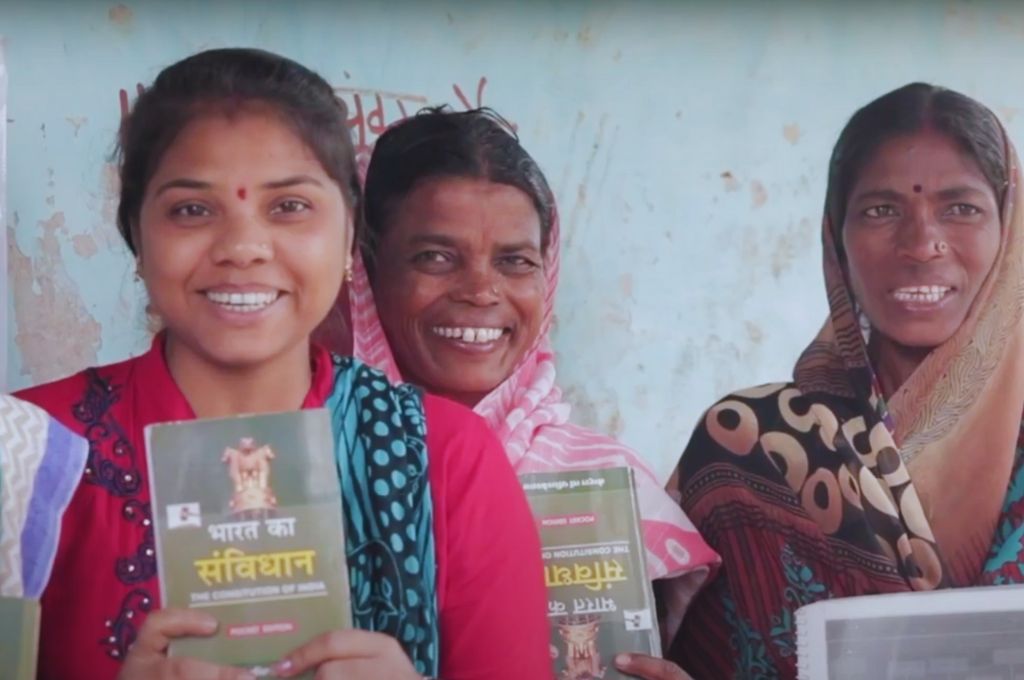The year 2018 saw big changes in the social sector, from progressive judgements on Article 377 and widespread civic action, to the worrying emergence of a new equation between state, citizen and market. The space for civil society has continued to shrink; but the solace, if any, is that we are not alone. In fact, we are in the company of 196 countries where the trend is the same.
We have seen both positive and cautionary shifts occur. To understand them better, we asked leaders (all with decades of experience in their respective fields) the following question:
In your opinion, what was the most important trend that shaped the social sector in 2018?
Below are the perspectives of Anand Bang, Ananthapadmanabhan Guruswamy, Anish Kumar, Bishwadeep Ghose, Dhaval Udani, Kavitha Kuruganti, PR Ganapathy, on the most crucial changes they witnessed in the year gone by.
The #MeToo movement offered a ray of hope both for newer ways of civic action as well as questioning deep rooted patriarchy, particularly in the formal sector. Being a largely digital movement, it helped bolster the agency of the survivors to take on perpetrators, and build solidarity networks.
We also witnessed the mobilisation and the march of farmers in many parts of the country as an example of citizen action.
The judiciary, for its part, especially the Supreme Court did more to support civil and political rights with progressive judgements on Article 377, Aadhaar, Sabrimala, euthanasia, among others, regardless of the controversies surrounding each of them.
– Bishwadeep Ghose, Director Programmes, Arghyam
Entities that have been seen to represent opposite camps in the past, joined hands to beat back common enemies and to take on the mighty state.
An example of this is the All India Kisan Sangharsh Coordination Committee, a platform of more than 200 farm organisations. New alliances and networks have emerged among these organisations — ones that represent big irrigated farmers as well as landless peasants and agricultural workers.
The political spectrum that they cover is also much larger than ever before. Such formations also necessarily have broad based leadership and have the advantage of diverse strengths, skill sets, and expertise coming together. Going forward these are going to be formidable forces.
– Kavitha Kuruganti, Founder Convenor, Alliance for Sustainable and Holistic Agriculture (ASHA)
Several billion-dollar funds and other initiatives were announced in 2018. We also saw the sudden and energetic involvement of several luminaries from the world of high finance and investment banking in the sector. High-priced consultants were engaged to tell the development sector how to achieve private-sector like efficiency, ‘at scale’.
The development sector seriously lacks the management capacity to absorb these billions of dollars.
Nobody seems to realise that the development sector seriously lacks the management capacity to absorb these billions of dollars. As a result, any business, irrespective of the customer segment it serves, is described as having social impact just by virtue of its being in a developing country.
The last time we saw the world of mainstream finance take an interest in development, we got the microfinance crisis. We must guard against the risks of that happening again.
– PR Ganapathy, Regional Director, Stanford Seed

Photo courtesy: Flickr
We have seen a fundamental difference in attitude towards the use of online channels for fundraising by nonprofits. While previously we were asked, “what is a payment gateway?”, last year the question changed to “what are your charges?” This is a clear sign of maturity of organisations who are realising the importance of retail fundraising and the use of online channels to do this.
There was also an uptake in UPI as a mode of payment. Data from Danamojo, showed that March 2018 had just three percent of donors using UPI as a medium. In March 2019, this number jumped to over 10 percent — a 3X increase in the past year. We see this trend accelerating in the year ahead making it imperative for all nonprofits to get a legally-compliant fundraising process via UPI in place.
– Dhaval Udani, Founder and CEO, Danamojo
The big all-knowing government was back. The past year saw the launch of large programmes like Aspirational Districts, Mission Antyodaya, KISAN, and PMJAY, among others.
In all of these, the government actively sought out the private sector while betting on its own capacity to deliver, and more importantly, its capacity to mobilise citizens.
This – the government pursuing private funds – has resulted in squeezing resources from citizen action, and increasing the marginalisation of civil society organisations, which we’ve already been seeing over the last few years.
– Anish Kumar, C0-Lead, Transform Rural India
There has been an increasing openness among government, philanthropy, and civil society to forge partnerships with one another.
The number of partnerships between, for instance, philanthropists and government, and government and nonprofits, has increased dramatically. And these have been across organisations of different stripes, for instance, large institutional foundations, family foundations, corporate foundations as well as smaller nonprofit organisations. The increase has happened in part because there has been a facilitator to ensure the collaborations materialise.
Political leadership has become more open to working with both philanthropy and civil society.
But the increase has also happened because of a realisation of mutual benefit. The growing fascination with scale and the realisation that the government is the key stakeholder in running any intervention at scale, has led to philanthropists seeking more partnerships.
The political leadership on the other hand, has recognised that the government machinery cannot deliver with the desired quality and care, and has thus become more open to working with both philanthropy and civil society to achieve social outcomes. Not to mention, CEOs and leaders have increasingly lent their voice to social causes, making such partnerships easier to facilitate.
– Anand Bang, Senior Advisor, Tata Trusts & Health Advisor to the Chief Minister of Maharashtra
Over the last year I have noticed a change in the reasons people have for entering the social sector — from the heart to the mind, from feelings to thoughts.
Earlier, the frame was more emotional — of wanting to set wrongs right, of responding to having witnessed something deeply moving, or of wanting to do work consistent with one’s values, ideology, and politics. Now, the motivation is increasingly phrased as wanting to have impact, solve problems, and exercise individual capacities.
There also seem to be many people who are ‘experimenting’ with being in the sector, seeing if it works for them.
This trend will play perhaps out in the coming years. Will we see a greater sense of urgency and impact-oriented behaviour? Will we on the other hand see less tenacity to stick ‘with it’?
– Ananthapadmanabhan Guruswamy, Senior Advisor, Centre for Skill Development and Entrepreneurship, and Dasra
There was greater consensus on the need for data for decision-making or evidence building. However, there are issues related to access, granularity, and authenticity of data that make its use sub-optimal at the moment.
The past year saw several experiments exploring whether data could trigger collaborations, drive accountability, and empower end users. We also saw research being done to test if data, once collected, could serve multiple uses and users – other programmes, departments, or communities long after that particular project was over.
– Bishwadeep Ghose, Director Programmes, Arghyam
Disclaimer: All views and opinions expressed are personal.




